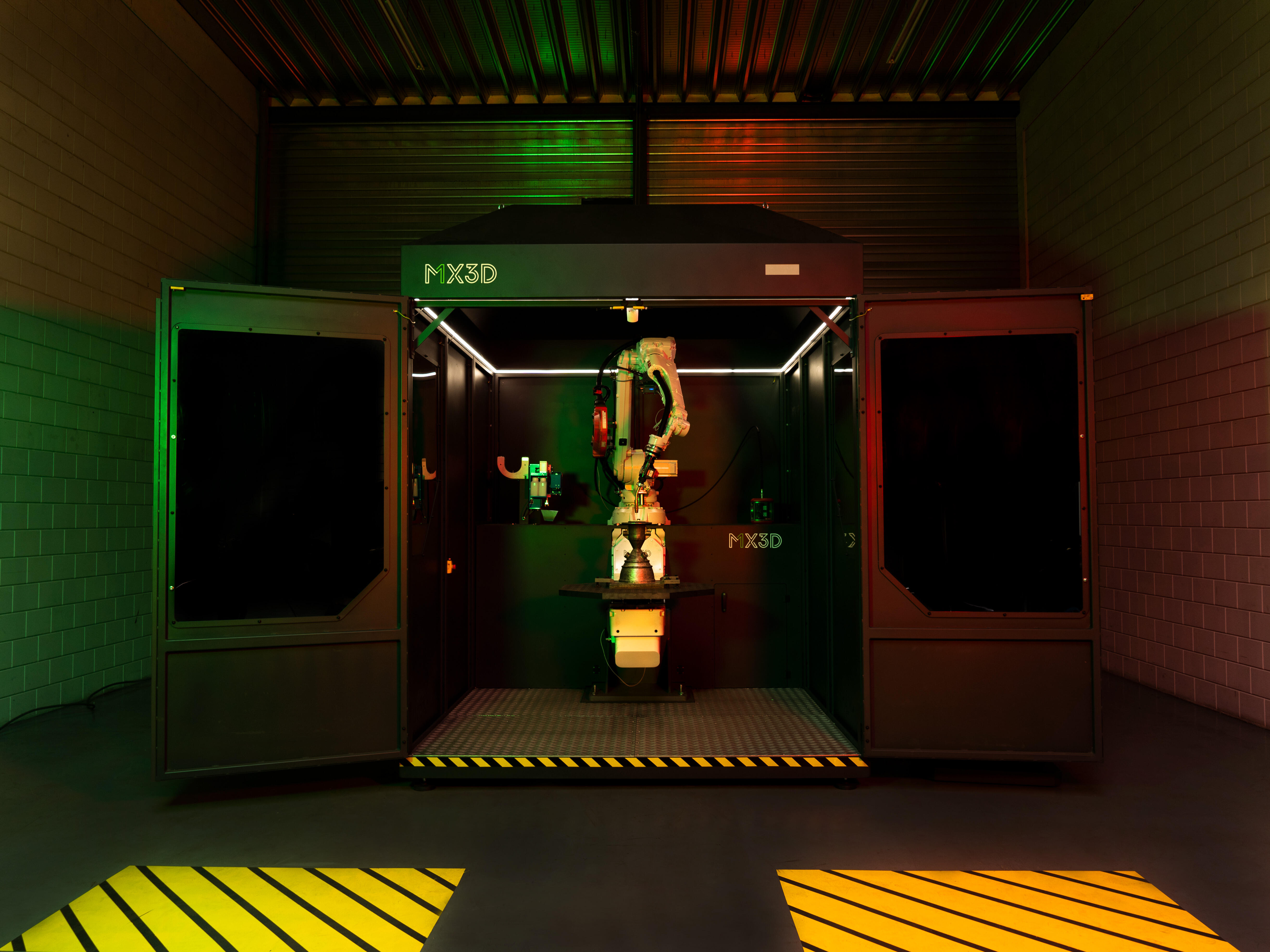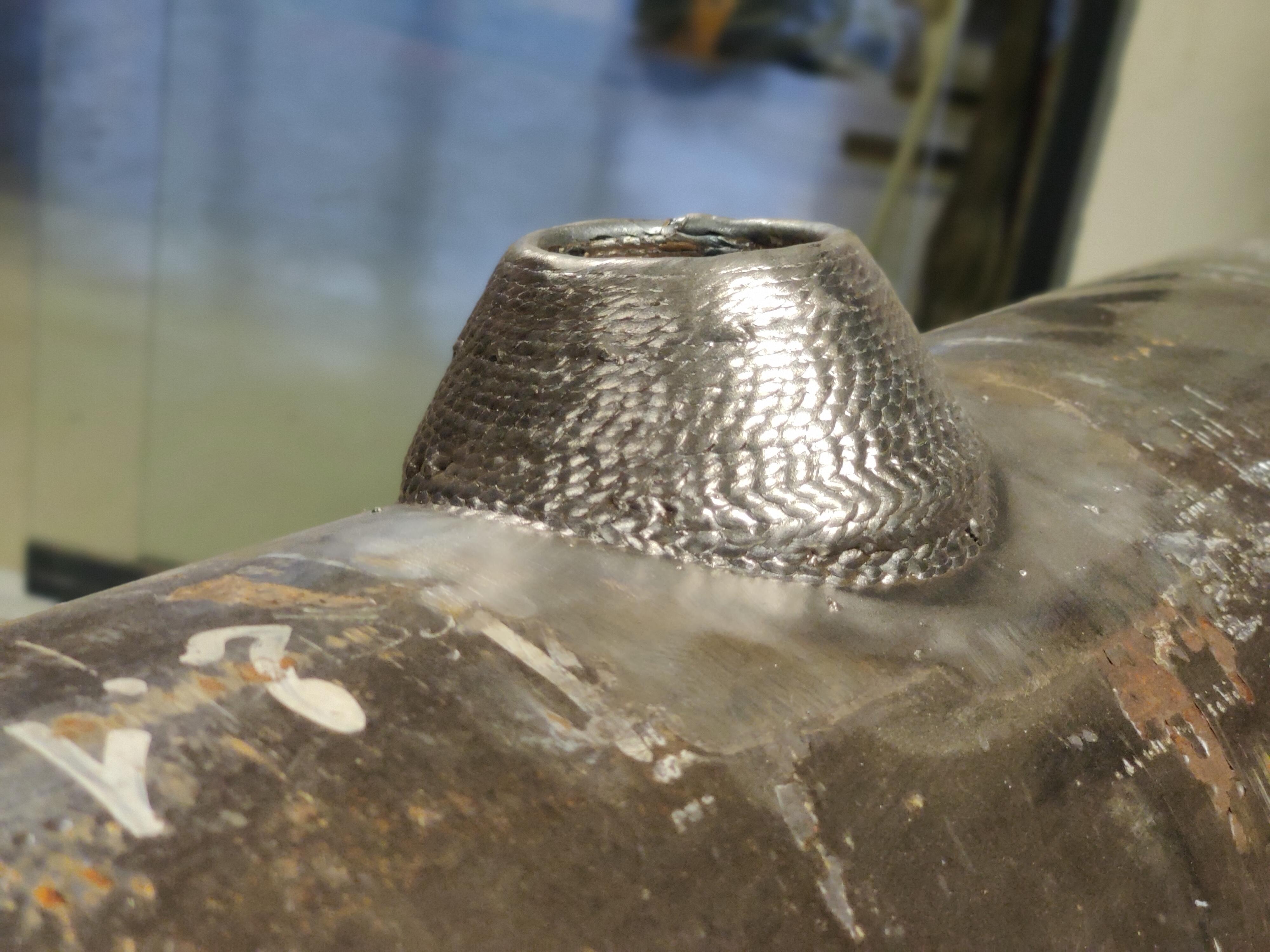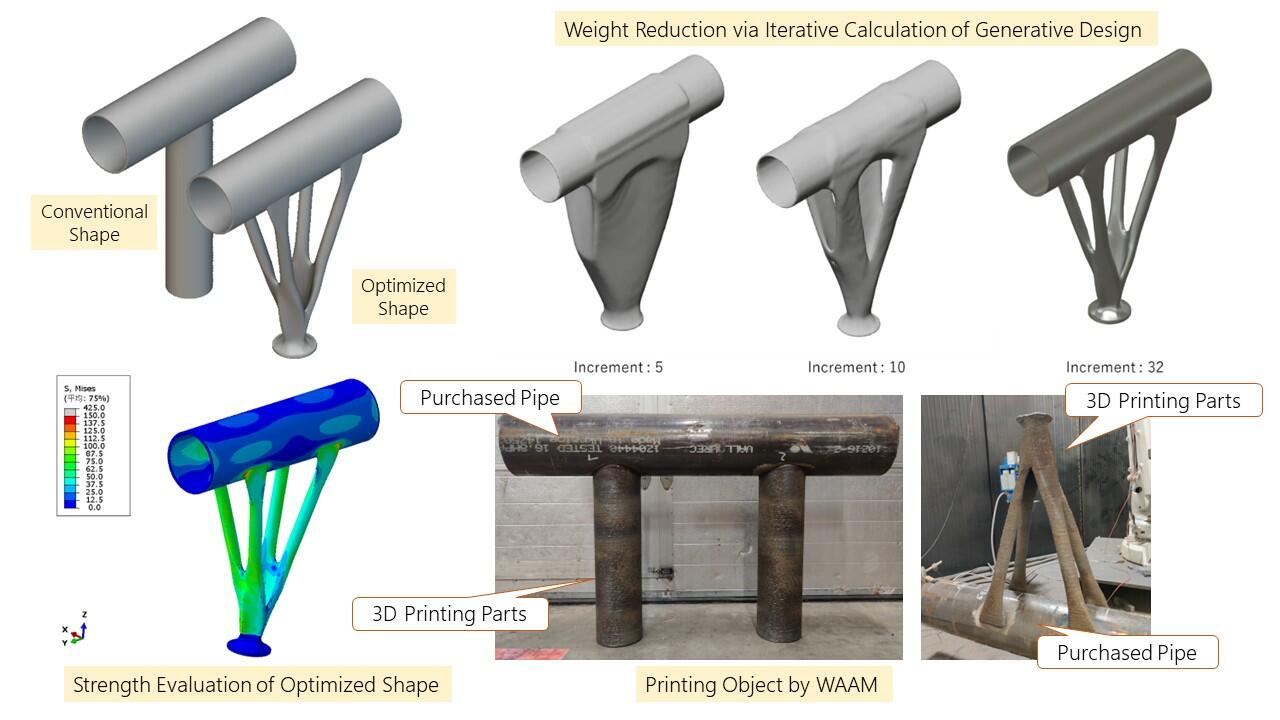News Releases 2023
Nov. 16, 2023
Application Validation for the Full-scale Introduction of Metal 3D Printers
JGC CORPORATION (Representative Director and President: Farhan Majib), which operates the overseas engineering, procurement, and construction (EPC) business of the JGC Group, is promoting the "optimization of construction methods through the introduction of 3D printing" as part of the IT Grand Plan 2030, the IT strategy of the JGC Group. In this context, the company has recently carried out design and printing using 3D printers with carbon steel materials, which have rarely been applied worldwide, and has acquired knowledge of printing at the same level of quality as conventional manufacturing methods. In addition, the company has pursued shapes that can only be achieved with 3D printing and has succeeded in producing piping components that are both lightweight and strong.
JGC Corporation is promoting the direct manufacture of structures at construction sites using large 3D printers in order to shorten the lead time from design to construction and stabilize quality in the execution of EPC projects. The introduction of a gantry-type concrete construction 3D printer, a cement-based 3D printing that takes into account its suitability for the printing of large structures, is being considered*1.
On the other hand, with regard to 3D printing for metallic materials, the company has focused on WAAM technology*2, one of the 3D printing processes, and has conducted joint research with MX3D*3 in the Netherlands since July 2021 to realize the manufacture of piping components made of carbon steel, which is most commonly used in plant construction work. The following results were achieved.
1. Printing and quality assurance of piping components made of carbon steel
In the 3D printer industry, there are many examples of their application to high-grade steels such as alloys, but there are still few examples of printing carbon steel, which is most commonly used in plant construction work. In the joint research, piping components were printed using WAAM technology with carbon steel, and strength tests were conducted to confirm the quality of the printing. Through these tests, knowledge was gained on the production of piping components from carbon steel with the same level of quality as conventional piping components.
The joint research aims to optimize the shape of conventional piping components and reduce the weight of materials using the generative design function in Autodesk Fusion 360®*4, which produces an optimized shape with a smooth surface. In this research, the shape of the piping support was optimized by using this function, and the weight of the materials used was reduced by approximately 30-40%. In addition, by optimizing the shape, we also succeeded in increasing the strength, achieving a 20-60% increase in collapse load.
Currently, JGC Corporation is studying the implementation of 3D printing in plant construction work in order to further concretize the implementation of this technology. For example, addressing the issues of external coating and fatigue strength, which are major challenges in the production of metal parts using 3D printers. Achieving direct manufacturing of structures by large 3D printers at the construction site is expected to significantly mitigate risks in project execution, such as compensating for the shortage of human resources at construction sites, in addition to reducing the lead time from design to construction.
※1:For more information on the Group's cement-based 3D printer initiatives, click here (https://www.jgc.com/en/news/2021/20210630.html).
※2:WAAM technology is a 3D printing technology that uses welding wire as the metal material and melts the wire with an arc heat source. In addition, compared with H-beams made from conventional rolled materials, the weight of the printed objects, which is reduced by the unique shape produced by the WAAM technology, can reduce CO2 emissions in the rolling process, etc., and is said to have a smaller impact in terms of climate change.
※3:MX3D, a Dutch start-up company offering a 3D printing system for metal materials based on the WAAM technology, has produced and completed the first 3D printed steel bridge in Amsterdam.
※4:Autodesk Fusion 360® is 3D CAD/CAM software for machining that added generative design functionality in 2018. Generative design can generate multiple design models by iterating design calculation under given constraints. By selecting the optimal model based on the relationship between weight and rigidity from the generated design models, it is possible to reduce the weight and increase the strength of the component.


Photo 1: MX3D 3D printer Photo 2: Piping components printed by WAAM technology

<Benefits of implementing 3D printing in plant construction>
■ Reduced lead times:
If the lead time from design to fabrication and installation of equipment and piping components can be reduced by introducing 3D printing directly to the site and printing the structures, the risk of engineering design changes and rework can be significantly reduced. Additionally, by printing on site, transport costs from the vendor's factory to the site can also be reduced.
■Freedom of printing:
Compared with conventional manufacturing methods, more complex and highly flexible printing can be carried out on site, making it easier to adjust to the site in response to manufacturing and construction errors. This flexibility also enables a responsive approach to engineering design changes, which is expected to avoid the need for remanufacturing. Furthermore, shape optimization and weight reduction will enable the offering of new value to customers.
■Quality stabilization:
The high reproducibility of dimensional accuracy and quality means that construction work can be carried out without depending on the skills of construction site workers. This is expected to lead to the stabilization of quality. Additionally, this reproducibility allows for continuous operation 24 hours a day while ensuring quality.
■On-site manpower saving:
The number of workers mobilized to a site can be reduced, resulting in reduced labor costs and the ability to cope with labor shortages in remote areas. Furthermore, this reduction in workforce can significantly decrease accidents and disasters at construction sites, which is an important value for customers.